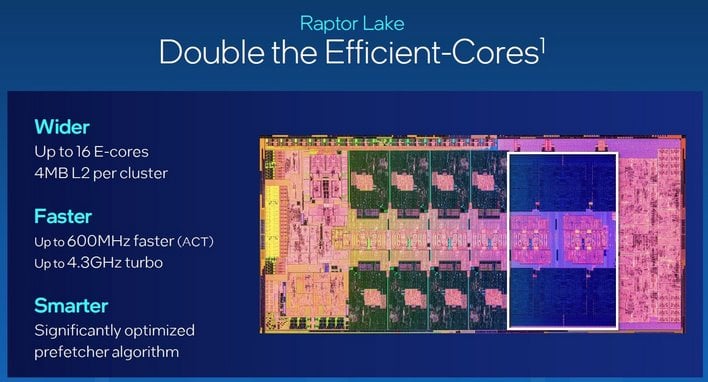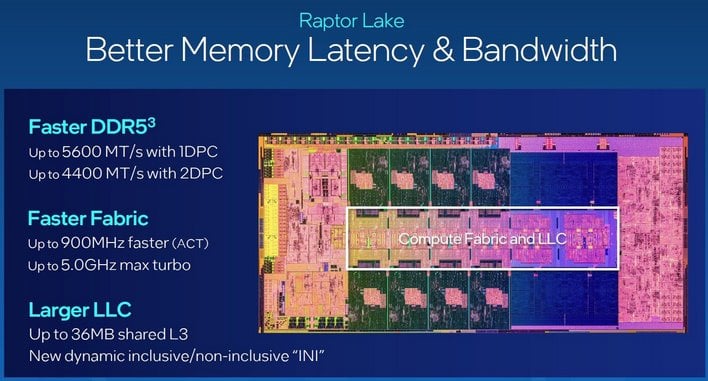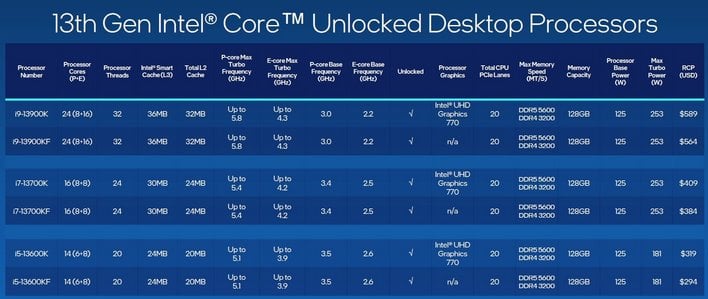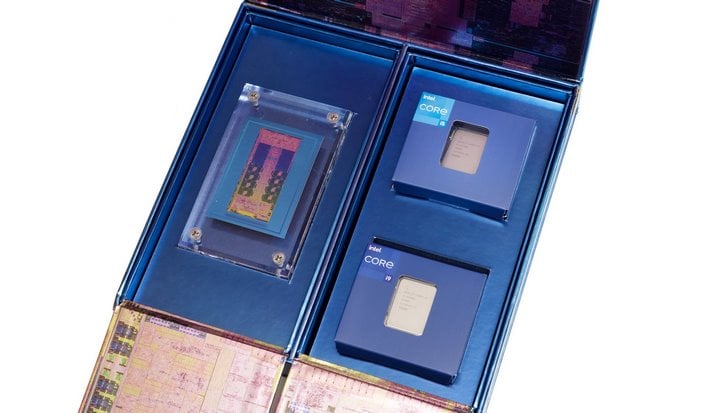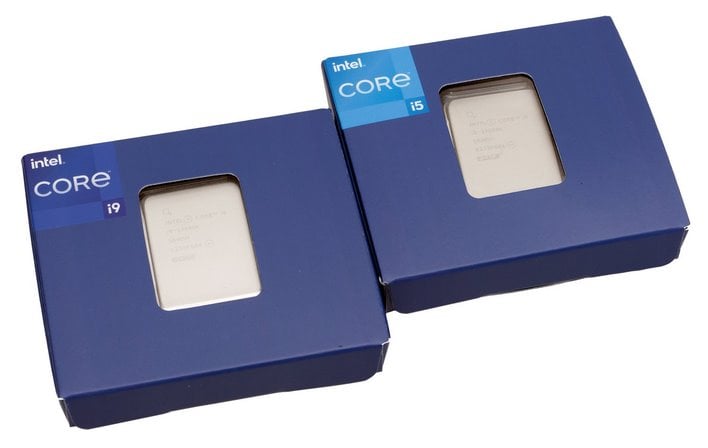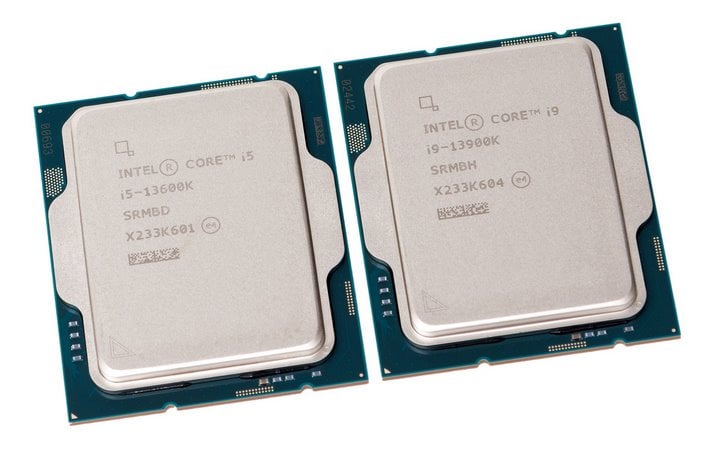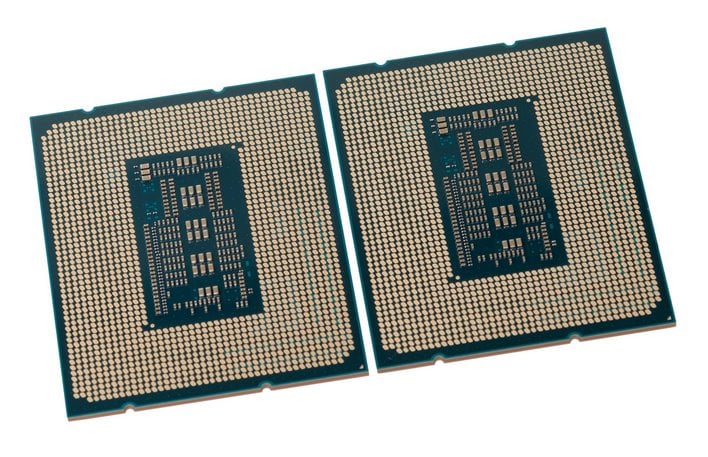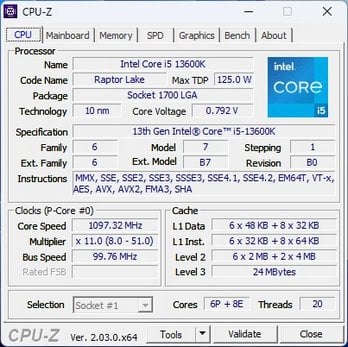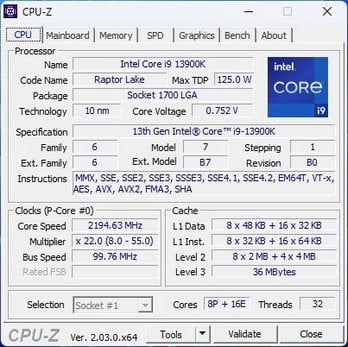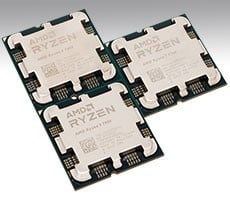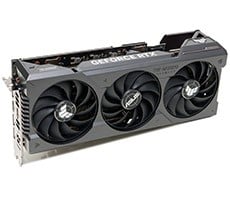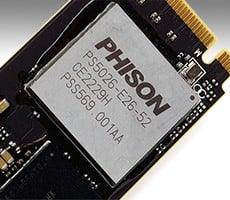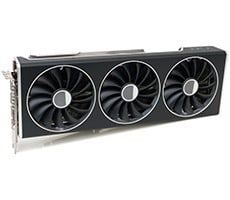Intel Core i9-13900K & Core i5-13600K Review: Raptor Lake Roars
| Intel Core i9-13900K - $589, Intel Core i5-13600K - $289 More cores, more cache, higher frequencies, and a refined design and manufacturing process boost the performance of Intel's 13th Gen Core processors significantly.
|
|||

|

 |
||
A few weeks back, during its Innovation 2022 event, Intel revealed the first salvo of 13th Gen Core desktop processors based on the Raptor Lake-S architecture. The processors didn’t ship back then, but rather the initial line-up of CPUs was disclosed along with the architectural enhancements coming to Raptor Lake-S. The announcement was more of a strategic tease, to give consumers something to ponder, since AMD had lifted the embargo on the Ryzen 7000 series just a day before.
If you haven’t seen our initial coverage of Intel’s 13th Gen Core processors, pause for a moment to check it out. Raptor Lake-S isn’t a complete departure from the hybrid Alder Lake architecture, which powered last-year’s 12th Gen Core processors, so we’ll only be summarizing Raptor Lake-S’ inner workings here. Instead, today we get to show you exactly how Intel’s new top-of-the-line Core i9-13900K performs, alongside its more affordable counterpart, the Core i5-13600K. Of course, we’ve got plenty of comparison data to share as well, going back to the Ryzen 5000 and 11th Gen Core processor families.
We should also mention that later today, we’ll be chatting live with Intel’s Marcus Kennedy about Raptor Lake-S and 13th Gen Core processors. So, if you’ve got questions after reading this, be sure to pop over to our YouTube channel (or Facebook, or Twitch) to get some answers...
Raptor Lake Architecture Recap
As mentioned, Raptor Lake (Raptor Lake-S is a more focused codename for the current desktop parts), is fundamentally similar to Alder Lake. Like its predecessor, Raptor Lake is a hybrid architecture with a mix of P (Performance) and E (Efficiency) cores. The P-cores in Raptor Lake, however, will boost to considerably higher frequencies—up to 5.8GHz in the Core i9-13900K, with a 6GHz special edition coming sometime next year.In addition to offering higher frequencies, the number of E-cores in 13th Gen Core processors will be increased by up to 2X in some models. On top of that, the L2 cache for both the P-cores and E-cores is larger. There will be 2MB of L2 available per P-core (that’s double what’s in Alder Lake) and 4MB per E-core cluster. Because L3 cache scales with the number of cores, there’s more L3 in some models too. And that L3 features a new dynamic inclusive/non-inclusive caching algorithm (INI). Inclusive caching keeps all of the multi-level (L1 / L2) cache data in the LLC to optimize single-thread performance by improving hit rates. Whereas non-inclusive caching only copies select MLC data, freeing up more capacity in the L3, which can improve MT performance. Using telemetry data and machine learning, Raptor Lake dynamically adjusts its caching policy to optimally use the L3 cache. The speed paths within the chip have also been improved and there’s a new dynamic prefetcher algorithm dubbed L2P that incrementally improves performance as well.
The combination of higher frequencies, more cores and cache, and the additional tuning within the design, should results in an approximate 15% uplift in single-threaded performance and up to a 41% uplift in multi-threaded workloads according to Intel. We’ll find out if that’s the case in just a bit.
Intel was able to beef up Raptor Lake-S based 13th Gen Core processors by using an upgraded Intel 7 manufacturing process to build the chips, which leverages 3rd Generation Intel SuperFIN transistors. The Intel 7 process is also more mature at this point. The updated process allowed Intel to alter Raptor Lake’s frequency and voltage curve significantly versus Alder Lake such that Raptor Lake will run at the same frequencies of Alder Lake at lower voltages (>50mV) or at up to 200MHz higher frequencies at similar voltages. Raptor Lake can also turbo more than 600MHz higher.
To help better feed the cores, Intel has increased the officially-supported DDR5 memory speed to 5,600MT/s on top-end Raptor Lake-S chips when using one DIMM per channel, or 4,400MT/s when using two DIMMs per channel. Like AMD’s Ryzen 7000 series, filling all of the DIMM slots on the motherboard will reduce peak bandwidth, due to the signaling challenges associated with high-speed DDR5 memory. 13th Gen Core processors also feature faster internal fabric that can boost up to 5GHz to provide a lower latency high bandwidth path to system memory.
Intel's Initial 13th Gen Core Series Lineup
The initial line-up of 13th Gen Core processors based on Raptor Lake-S will technically consist of six processors, but it’s only their iGPU configurations that separate the “K” and “KF” models…At the top of the stack is the 24-core / 32-thread Core i9-13900K and 13900KF, followed by the 16-core / 24-thread Core i7-13700K and 13700KF, and finally the 14-core / 20-thread Core i5-13600K and 13600KF.
Like previous-gen Intel Core processors, all “K” and “KF” models are unlocked for more flexible overclocking and the “KF” chips lack any on-board graphics. Otherwise, they are similar. All of the processors in the stack have increased core counts versus their 12th Gen counterparts, with more cache, and higher frequencies. Prices are similar, however. The Core i5-13600KF entry point will arrive with an MSRP of $294, while the top-end Core i9-13900K for enthusiasts will be priced at $589. That’s a full $110 lower than AMD’s current flagship 16-core / 32-thread Ryzen 9 7950X ($699), for those keeping track.
Checking Out The Core i9-13900K & Core i5-13600K
Physically, the new 13th Gen Core processors look identical to last year’s 12th Gen products. They use the same socket, and 13th Gen Core processors will work with the same motherboards, provided the motherboard manufacturer has updated the board’s BIOS to support the new chips. The only real physical differences are the actual model number branding and the layout of the surface mounted components on the underside of the chips.Intel's Core i9-13900K features a monolithic, 24-core (32-thread) die, outfitted with 8 Performance cores and 16 Efficiency cores. The Core i5-13600K has 14 cores (20-threads), comprised of 6 P-cores and 8 E-cores. Like Alder Lake 12th Gen processors, these new 13th Gen Core processors based on Raptor Lake-S have asymmetric thread counts because the E-cores do not support HyperThreading. P-cores can process two threads simultaneously, while E-cores can handle only one.
The Core i9-13900K has a base clock of 2.2GHz on its E-cores and 3.0GHz on its P-cores, with an all-P-core Turbo frequency of up to 5.8GHz. The 13900K’s E-cores will boost up to 4.3GHz. The Core i5-13600K has a base clock of 2.6GHz on its E-cores and 3.5GHz on its P-cores, with and all-P-core Turbo of 5.190GHz and all E-core Turbo frequency of 3.9GHz. Note that base clocks are somewhat lower than their 12th Gen counterparts, but boost clocks are much higher, by hundreds of MHz.
Intel Core i9-13900K & Core i5-13600K CPU-Z Details
Intel Core i9-13900K’s and Core i5-13600K’s CPU-Z details are outlined in the images above. Both processors are based on the same stepping / revision, and have the same 125W base TDP rating. Although at PL2, power can peak up to 253W on the 13900K or 181W on the 13600K, or even higher, depending on the motherboard and cooler being used.
As previously mentioned, the chips differ in terms of their clocks and core counts (and cache). There’s 176K (48K + 32K / 32K + 64K) of total L1 cache per core, 2MB of total L2 cache per P-core, 4MB of L2 cache per 4-core E-core complex, and up to 36MB of L3 shared across all of the cores (the Core i5 has 24MB of L3).
Now let's get a look at the supporting cast of hardware in our 13th Gen test bed. Z790 motherboards and memory are next...

